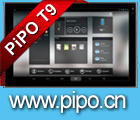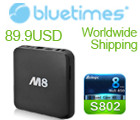Pixel Qi and CPT are preparing 3 different screen sizes to be mass manufactured in 2011, including a 7″ 1024×600 design that will be shown early January at CES in Las Vegas.
CPT has a monthly production capacity of 40 million LCD screens. That’s 480 million LCD screens per year. How much of these are going to be Pixel Qi types is to be seen. CPT is the worlds second largest manufacturer of mid-size (4.8″-11.6″) LCD screens (behind CMI).
I’m hoping that the 3 sizes that they are working on are 4.8″ or 5″, 7″ and 10.1″, sizes which I think are the best for Tablet and E-reader use. 4.8″ or 5″ being the largest to fit in normal pockets (passport sized), 7″ the largest to fit in jacket pockets and 10″ being current top Tablet and about the size of an A4 page. But I also think 11.6″ or 12.1″ screen size like the one Google wants for Chrome OS notebooks could also be a good size.
This alliance started early last summer when CPT showed a transflective screen of its own design at a Taiwanese trade show. Discussions between the two companies at that show made it apparent that Pixel Qi and CPT should work together to bring stronger product to market faster. A close alliance was formed and the teams have been working together quietly all fall. They have created samples of a 7” 1024×600 screens scheduled for mass production in early Q2 2011, which will be first publically shown at the CES 2011 exhibition in Las Vegas in early January 2011. This represents an expansion of Pixel Qi’s manufacturing strength beyond its first LCD manufacturing partner who has been shipping Pixel Qi’s 10” screen.
These dual-mode reflective and transflective LCD screens are crucial to realize the combination of Tablet and E-reader into one product. Without this type of screen, I don’t believe tablets can be used for reading books as backlights are not meant for reading, and for e-readers to use LCD also makes them more versatile thus also including all the tablet functions into one same product. Most importantly, this screen technology improves battery runtime for ARM Powered devices considerably, as in a 10″ ARM Powered tablet or laptop, the backlight probably consumes about 80% of the devices overall power, consider thus a screen that can work without a backlight or with a lower backlight intensity, and you have a battery runtime multiplied by as much as 5x in that same product. Thus an ARM Powered Tablet or Laptop that had 10 hours battery runtime on a regular backlit LCD may have up to 50 hours using this type of screen. Thus also making this screen absolutely crucial for projects like OLPC and the Indian education $35 tablet project if they want to make it viable that these devices can be used places where there isn’t a lot of power.
Source: pixelqi.com/blog1/



